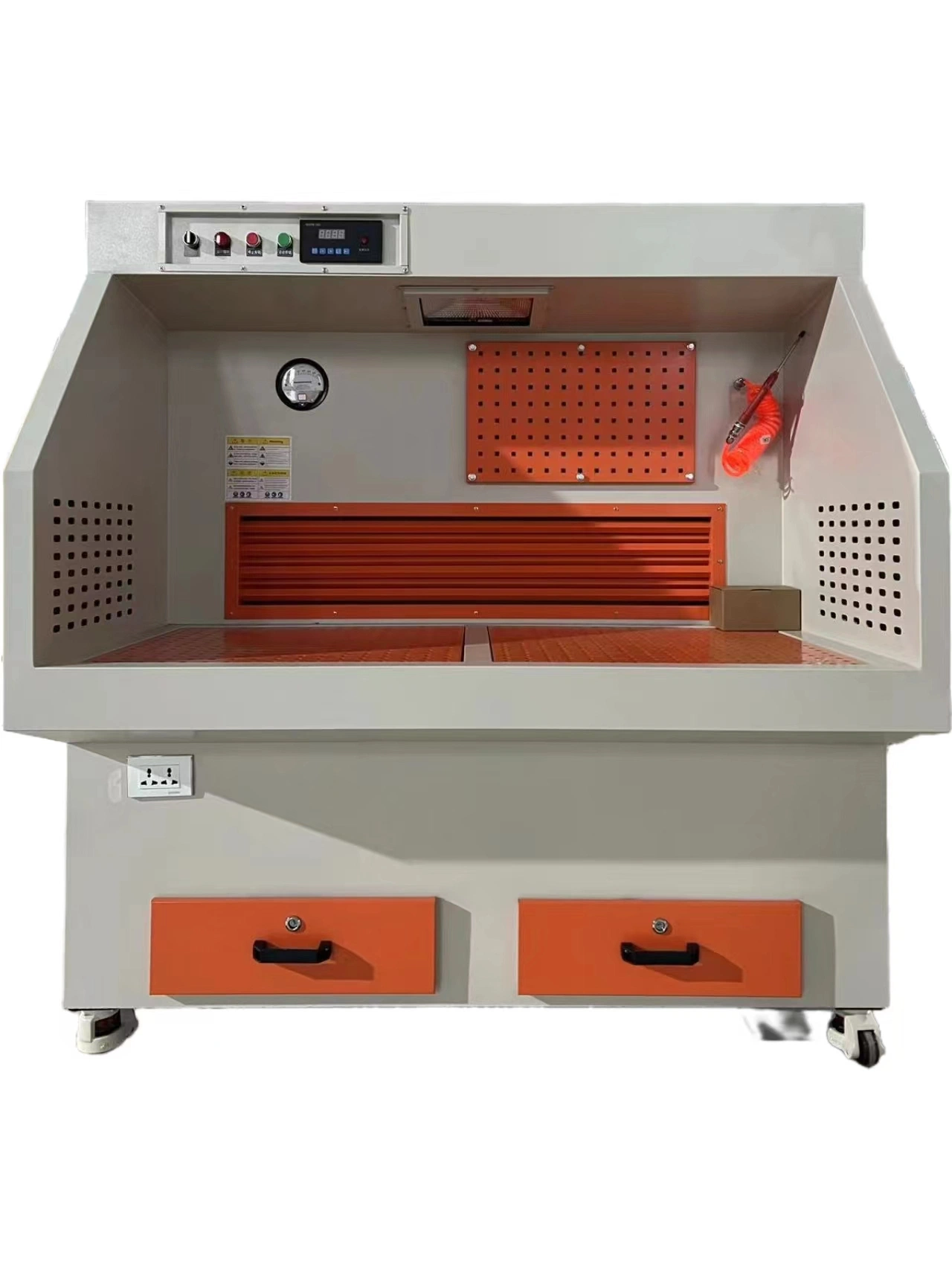Downdraft Worktables: Efficient, Clean, and Safe Workspaces for Your Projects
2025-02-24
In any workspace, especially in industries like woodworking, metalworking, or automotive, managing dust and debris is crucial for both safety and efficiency. Downdraft worktables provide a practical solution to this common issue by incorporating a ventilation system that effectively captures airborne particles. Whether you're working on precision tasks or dealing with hazardous materials, a downdraft worktable can make your workspace cleaner and safer.
What is a Downdraft Worktable?
A downdraft worktable is a specialized workstation designed to control and eliminate dust, fumes, and other particulates generated during various tasks like sanding, grinding, or painting. These worktables feature a built-in exhaust system, often incorporating a perforated surface and integrated fans or filters that pull air downward through the table, trapping contaminants before they can spread into the air. The result is a cleaner environment and a more comfortable workspace.
Key Features of Downdraft Worktables
1. Efficient Dust Collection
The primary function of a downdraft worktable is to capture dust and particles generated during work. The table's perforated surface allows air to be drawn downward into a collection system, which often includes filters or bag systems to trap dust before it escapes into the air. This helps to reduce airborne pollutants, improving air quality and reducing the risk of respiratory issues for workers.
2. Built-In Ventilation
Many downdraft worktables come with powerful ventilation systems designed to draw air downward and away from the work surface. This airflow reduces the chances of dust settling on tools, equipment, and the surrounding environment. In addition, the ventilation system helps to keep fumes and odors from accumulating, which is especially important when working with materials like paints, adhesives, or chemicals.
3. Safety and Compliance
In many industries, dust and airborne particulates are not only a nuisance but also a safety hazard. Downdraft worktables help comply with workplace safety regulations by minimizing the presence of hazardous dust, such as wood dust, metal particles, or paint fumes. This is crucial for meeting occupational health and safety standards, as well as for preventing accidents related to inhalation exposure or fire hazards.
4. Versatile Applications
Downdraft worktables are not just for woodworking or metalworking; they can be used in a wide range of applications, including:
- Sanding and Grinding: When working with materials like wood, metal, or plastic, a downdraft table ensures that the dust is efficiently collected.
- Painting and Finishing: A clean environment is key for achieving smooth, high-quality finishes. Downdraft tables can help keep your workspace free from contaminants that might ruin the finish.
- Assembly and Repair: The clean, safe surface of a downdraft worktable makes it an ideal station for intricate assembly or repair tasks, where dust or fumes could interfere with precision work.
5. Easy Maintenance
Downdraft worktables are designed for easy cleaning and maintenance. The dust collection system typically includes removable filters, trays, or bags that can be emptied or replaced when full. Some models also include a built-in filtration system, allowing for more efficient dust collection and reducing the need for frequent filter changes.
Why Choose a Downdraft Worktable?
Cleaner Workspace
A major benefit of using a downdraft worktable is the cleaner environment it creates. With dust and fumes being captured at the source, your workspace remains tidier and healthier. This is particularly beneficial for workers who spend long hours in environments where dust and debris are constantly generated.
Improved Air Quality
By preventing dust from becoming airborne, downdraft worktables improve overall air quality. This is especially important in confined spaces or workshops with limited ventilation. A better-controlled air environment can lead to fewer respiratory problems and greater comfort during work.
Increased Productivity
Working in a cleaner, safer environment often leads to greater productivity. With less time spent on cleaning up dust or managing contaminants, workers can focus more on the task at hand. Additionally, since the worktable prevents dust from settling on tools and equipment, it reduces the risk of damage or malfunctions.
Long-Term Cost Savings
While a downdraft worktable may seem like a significant investment, it can save money in the long run by reducing the need for expensive cleaning equipment, protecting tools and machinery from dust-related damage, and helping to maintain a safe work environment to avoid costly health issues or accidents.
Downdraft worktables are an essential piece of equipment for anyone working in environments where dust, fumes, or particulate matter are generated. By incorporating a powerful ventilation system, these workstations help create a cleaner, safer, and more efficient workspace. Whether you're working with wood, metal, or chemicals, a downdraft worktable can significantly improve your work environment, protect your health, and boost your productivity. Investing in one is a smart choice for those who prioritize safety and quality in their projects.



